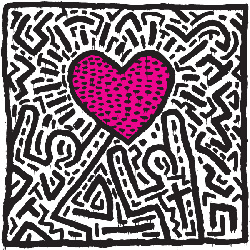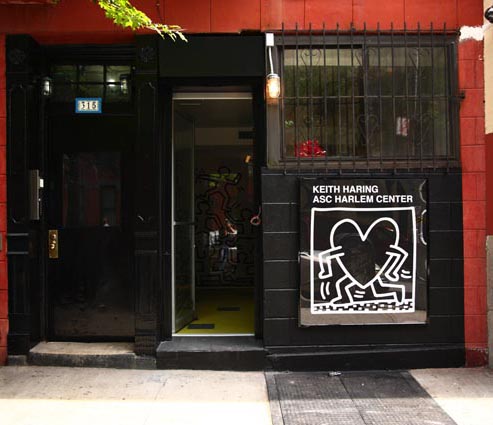Art as Epiphany
In the early ’80s, I had a brief period of musical Anglophilia. Nothing, it seemed, was allowed near my turntable or tape deck unless it was stamped: “Made in the U.K.” That went for music rags, too. And so about once monthly, with a promise I’d be back before dark, I’d hop the train into the city and hit the newsstands, that carried Smash Hits and Melody Maker—then bum around the Village thinking myself cooler than my junior-high brethren who were content to meander the food court at Mid-Island Mall and peruse the Members Only jacket selection at Merry-Go-Round.
This particular Saturday is sacrosanct, memory-etched. Me: age 12, in raging preadolescent love with Simon Le Bon and salivating for the perceived glamour of true teendom. I am wearing a faded, tragically hacked olive green athletic shirt with a gold number 42 on the front; a dense, spiky urchin of dark hair exploding from beneath the old grey fedora I’d bought at Andy’s Chee-Pees. I have too much copper dust on my eyes and too much candy-pink lacquer on my lips and am cantering east on Houston Street toward Bowery in purposefully mismatched Converse All-Stars with my city-dwelling camp friend, Nicole, singing Adam Ant’s “Stand and Deliver” when I see it—a vast, vibrant, kinetic mural lighting up an otherwise unremarkable and relatively seedy downtown street corner with bold color, smiling three-eyed faces and dancing figures that were somehow modern and primitive at the same time.
That was it: My Keith Haring moment.
I am neither a visual artist nor exceptionally knowledgeable where art is concerned, but I’m a New Yorker who came of age in the 1980s, and Haring’s imagery—whether whimsical or political, cartoonish or explicit (often a potent combination)—was indelible to both the city and the decade. It spoke to me. His was the art that whet my appetite. He made it tangible, even to me, an MTV-fed preteen girl from the suburbs.
And while it was precisely that accessibility that made him something of a pariah within New York’s art aristocracy (critics slammed him for lending his images to commercial items like Swatch watches and opening his famed and very successful Pop Shop), it was his goal from the time he began drawing his signature chalk figures in the subway. He wanted his work to be available, to be affordable. To anyone.
Haring was from the burbs too, actually, a native of Pennsylvania. And when he died, already an icon at the tender age of 31, from complications stemming from AIDS—a disease that came of age right alongside me—he left a legacy not only of brilliant works in sculpture and paint, but brilliant works in the hospitals, orphanages and inner-city schools where he gave children from around the world the gifts of art and self-worth in equal measure, but one of resolute strength, creating a foundation that would continue to serve the AIDS community long after he was gone. And so it has.
This particular Saturday is sacrosanct, memory-etched. Me: age 12, in raging preadolescent love with Simon Le Bon and salivating for the perceived glamour of true teendom. I am wearing a faded, tragically hacked olive green athletic shirt with a gold number 42 on the front; a dense, spiky urchin of dark hair exploding from beneath the old grey fedora I’d bought at Andy’s Chee-Pees. I have too much copper dust on my eyes and too much candy-pink lacquer on my lips and am cantering east on Houston Street toward Bowery in purposefully mismatched Converse All-Stars with my city-dwelling camp friend, Nicole, singing Adam Ant’s “Stand and Deliver” when I see it—a vast, vibrant, kinetic mural lighting up an otherwise unremarkable and relatively seedy downtown street corner with bold color, smiling three-eyed faces and dancing figures that were somehow modern and primitive at the same time.
That was it: My Keith Haring moment.
I am neither a visual artist nor exceptionally knowledgeable where art is concerned, but I’m a New Yorker who came of age in the 1980s, and Haring’s imagery—whether whimsical or political, cartoonish or explicit (often a potent combination)—was indelible to both the city and the decade. It spoke to me. His was the art that whet my appetite. He made it tangible, even to me, an MTV-fed preteen girl from the suburbs.
And while it was precisely that accessibility that made him something of a pariah within New York’s art aristocracy (critics slammed him for lending his images to commercial items like Swatch watches and opening his famed and very successful Pop Shop), it was his goal from the time he began drawing his signature chalk figures in the subway. He wanted his work to be available, to be affordable. To anyone.
Haring was from the burbs too, actually, a native of Pennsylvania. And when he died, already an icon at the tender age of 31, from complications stemming from AIDS—a disease that came of age right alongside me—he left a legacy not only of brilliant works in sculpture and paint, but brilliant works in the hospitals, orphanages and inner-city schools where he gave children from around the world the gifts of art and self-worth in equal measure, but one of resolute strength, creating a foundation that would continue to serve the AIDS community long after he was gone. And so it has.




Comments